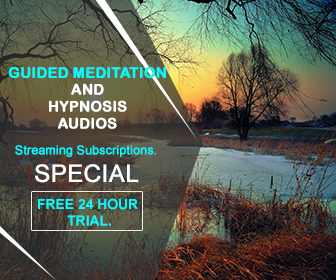Franz Mesmer (1734–1815) believed that there is a magnetic force or ‘fluid’ within the universe that influences the health of the human body. He experimented with magnets to impact this field in order to produce healing.
By around 1774, he had concluded that the same effect could be created by passing the hands in front of the subject’s body, later referred to as making ‘Mesmerizing passes’.
Although often viewed as one continuous history, the term hypnosis only gained widespread use in the 1880s, initially amongst those influenced by the developments in France, some twenty years after the death of James Braid.
Braid (a Scottish surgeon) coined the terms ‘hypnotism’ and ‘hypnosis’ in 1841 (derived from the term ‘neuro-hypnotism’ – nervous sleep) to contrast his own, unique, subject-centred, approach with those of the operator-centred mesmerists who preceded him.
The hypnotic sleep, is the very antithesis or opposite mental and physical condition to that which precedes and accompanies common sleep. Therefore, Braid defined hypnotism as a state of mental concentration that often leads to a form of progressive relaxation.
Despite briefly toying with the name ‘rational Mesmerism’, Braid ultimately chose to emphasise the unique aspects of his approach. He demonstrated the role of ordinary physiological and psychological processes, such as suggestion and focused attention in producing the observed effects.
HYPNOSIS
Hypnosis is a state of human consciousness involving focused attention and reduced peripheral awareness and an enhanced capacity for response to suggestion. The term may also refer to an art, skill, or act of inducing hypnosis.
Theories explaining what occurs during hypnosis fall into two groups. Altered state theories see hypnosis as an altered state of mind or trance, marked by a level of awareness different from the ordinary conscious state. In contrast, non-state theories see hypnosis as a form of imaginative role-enactment.
During hypnosis, a person is said to have heightened focus and concentration. The person can concentrate intensely on a specific thought or memory, while blocking out sources of distraction. Hypnotized subjects are said to show an increased response to suggestions.
Hypnosis is usually induced by a procedure known as a hypnotic induction involving a series of preliminary instructions and suggestion.
A person in a state of hypnosis is relaxed, has focused attention, and has increased suggestibility. The hypnotized individual appears to heed only the communications of the hypnotist and typically responds in an uncritical, automatic fashion while ignoring all aspects of the environment other than those pointed out by the hypnotist.
CLICK ON ABOVE GRAPHIC FOR MORE INFORMATION
CHARACTERISTICS
In a hypnotic state an individual tends to see, feel, smell, and otherwise perceive in accordance with the hypnotist’s suggestions, even though these suggestions may be in apparent contradiction to the actual stimuli present in the environment.
The effects of hypnosis are not limited to sensory change; even the subject’s memory and awareness of self may be altered by suggestion, and the effects of the suggestions may be extended (post-hypnotically) into the subject’s subsequent waking activity.
Self-hypnosis happens when a person hypnotises oneself, commonly involving the use of autosuggestion. The technique is often used to increase quit smoking or reduce stress, and is claimed to help with stage fright, relaxation, and physical well-being.
Hypnosis typically involves an introduction to the procedure during which the subject is told that suggestions for imaginative experiences will be presented.
A hypnotic procedure is used to encourage and evaluate responses to suggestions. When using hypnosis, one person (the subject) is guided by another (the hypnotist) to respond to suggestions for changes in subjective experience, alterations in perception, sensation, emotion, thought or behavior.
CONSCIOUS AND UNCONSCIOUS MIND
Some hypnotists view suggestion as a form of communication that is directed primarily to the subject’s conscious mind, whereas others view it as a means of communicating with the “unconscious” or “subconscious” mind.
Sigmund Freud’s psychoanalytic theory describes conscious thoughts as being at the surface of the mind and unconscious processes as being deeper in the mind.
Braid, Bernheim and other Victorian pioneers of hypnotism did not refer to the unconscious mind but saw hypnotic suggestions as being addressed to the subject’s conscious mind.
Indeed, Braid actually defines hypnotism as focused (conscious) attention upon a dominant idea (or suggestion).
Hypnotists who believe that responses are mediated primarily by an “unconscious mind”, make use of indirect suggestions such as metaphors or stories, whose intended meaning may be concealed from the subject’s conscious mind.
The concept of subliminal suggestion depends upon this view of the mind. By contrast, hypnotists who believe that responses to suggestion are primarily mediated by the conscious mind, have tended to make more use of direct verbal suggestions and instructions.
CLICK ON ABOVE GRAPHIC FOR MORE INFORMATION
HYPNOTIC INDUCTION
Hypnosis is normally preceded by a ‘hypnotic induction’ technique. Traditionally, this was interpreted as a method of putting the subject into a “hypnotic trance”.
However, subsequent “nonstate” theorists have viewed it differently, seeing it as a means of heightening client expectation, defining their role, focusing attention, etc.
There are several different induction techniques. One of the most influential methods was Braid’s “eye-fixation” technique, also known as “Braidism”. Many variations of the eye-fixation approach exist.
Take any bright object, hold it from about eight to fifteen inches from the eyes, at such position above the forehead as may be necessary to produce the greatest possible strain upon the eyes and eyelids, and enable the patient to maintain a steady fixed stare at the object.
The patient must be made to understand that they have to keep their eyes steadily fixed on the object, and the mind riveted on the idea of that one object. It will be observed, that owing to the consensual adjustment of the eyes, the pupils will be at first contracted.
They will shortly begin to dilate, and, after they have done so to a considerable extent, and have assumed a wavy motion, if the fore and middle fingers of the right hand, extended and a little separated, are carried from the object toward the eyes, most probably the eyelids will close involuntarily, with a vibratory motion.
Braid later acknowledged that the hypnotic induction technique was not necessary in every case and subsequent researchers have generally found that on average it contributes less than previously expected to the effect of hypnotic suggestions.
SUGGESTION
When James Braid first described hypnotism, he did not use the term “suggestion” but referred instead to the act of focusing the conscious mind of the subject upon a single dominant idea. Braid’s main therapeutic strategy involved stimulating or reducing physiological functioning in different regions of the body.
In his later works, however, Braid placed increasing emphasis upon the use of a variety of different verbal and non-verbal forms of suggestion, including the use of “waking suggestion” and self-hypnosis. Subsequently, Hippolyte Bernheim shifted the emphasis from the physical state of hypnosis on to the psychological process of verbal suggestion.
I define hypnotism as the induction of a peculiar psychical [i.e., mental] condition which increases the susceptibility to suggestion. Often, it is true, the [hypnotic] sleep that may be induced facilitates suggestion, but it is not the necessary preliminary. It is suggestion that rules hypnotism.
Contemporary hypnotism uses a variety of suggestion forms including direct verbal suggestions, “indirect” verbal suggestions such as requests or insinuations, metaphors and other rhetorical figures of speech, and non-verbal suggestion in the form of mental imagery, voice tonality, and physical manipulation.
CLICK ON ABOVE GRAPHIC FOR MORE INFORMATION
STAGE HYPNOSIS
Stage hypnosis is often performed by Mentalists, practicing the art form of Mentalism and as a form of entertainment, traditionally employed in a club or theatre before an audience.
Due to stage hypnotists’ showmanship, many people believe that hypnosis is a form of mind control, as the hypnotists typically attempt to hypnotise the entire audience. They then select individuals who are ‘under’ to come up on stage and perform embarrassing acts, while the audience watches.
However, the effects of stage hypnosis are probably due to a combination of psychological factors, participant selection, suggestibility, physical manipulation, stagecraft, and trickery.
Possibly, the desire to be the centre of attention, having an excuse to violate their own fear suppressors and the pressure to please are thought to convince subjects to ‘play along’.
FURTHER USES OF HYPNOSIS
Hypnosis in popular culture – Politics – Warfare – Television – Secret Police – Big Brother
For over a century hypnosis has been a popular theme in fiction and music; it features in movies almost from their inception and more recently has been depicted in television and online media. – The Manchurian Candidate
The vast majority of these depictions are negative stereotypes of either control for criminal profit and murder or as a method of seduction. Others depict hypnosis as all-powerful or even a path to supernatural powers.
CLICK ON ABOVE GRAPHIC FOR MORE INFORMATION
EXPLORE SOME EXCELLENT EXAMPLES OF THE PHENOMENON :-
Hypnosis: An Altered State of Consciousness
Hypnosis Versus Hypnotherapy – Understand The Difference
Further Exploration Of Hypnosis
Payseur Family History
Fritz Springmeier – Bloodlines of Illuminati
The Rothschild Dynasty
The Disney Story
The above four links open a new tab in Louis Payseur’s site.
Well-Being & CBD Oil – Curated Presentation
Shopping & Clothing – Curated Presentation
Accessories – Curated Presentation




















Hi! I suppose you may already have stumbled across Mattias Desmet and his thoughts on the current mass-hypnosis… If not : https: //youtu.be/IqPJiM5Ir3A
Not yet Patrick
Thank you for sharing your precious knowledge. Just the right information I needed. By the way, check out my website at http:/ /webemail24.com about Print on Demand Services.
Hi again Felix